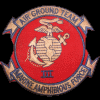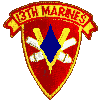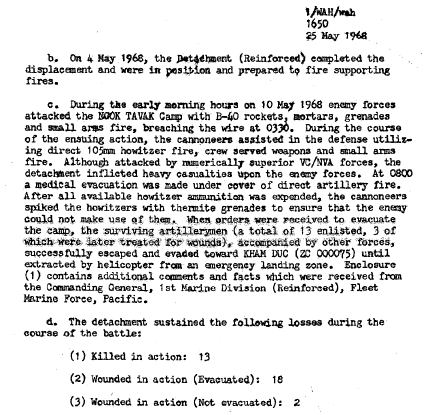| |
|
|
|
William Dee Mc Gonigle
Private First Class
D BTRY, 2ND BN, 13TH MARINES, 1ST MARDIV, III MAF United States Marine Corps Wichita, Kansas October 29, 1948 to May 10, 1968 WILLIAM D McGONIGLE is on the Wall at Panel 58E, Line 11 See the full profile or name rubbing for William Mc Gonigle |
   |
 |
IF I COULD GIVE
I'D GIVE MY ARMS |
|
I am a 16 year old girl with a POW/MIA bracelet for PFC Willam D. McGonigle and I was just looking for information about him so if you have any it would be great.
Thank you, |
|
I'm at NSA JRB Ft. Worth,TX for Chief Petty Officer (E-7) induction/training. I'm doing a report based on MIA/KIA military members killed from my home town, Wichita, Kansas. I was reading his bio from the Vietnam War and I was intrigued by him and other news articles about the brave men who lost their lives defending the camp and the rescue effort to abandon the camp. The article really moved me. Navy Chief, Navy Pride. All one military, all one fight.
Very Respectfully, |
A Note from The Virtual WallIn the spring of 1968 the North Vietnamese Army's 2nd Division was enroute to South Vietnam, moving down the Ho Chi Minh trail in Laos. By early May, the division's advance regiments - the 1st and 2nd Regiments - had entered South Vietnam using the French-built Route 14 which passed by the old French fort at Ngok Tavak. The NVA commanders decided that Ngok Tavak and the main Special Forces camp at Kham Duc had to go.Beginning at about 0300 on 10 May 1968, Ngok Tavak came under heavy attack by a North Vietnamese Army infantry battalion, an element of the 2nd NVA Regiment. In a pitched battle, the small force of defenders staved off immediate defeat, but by noon on 10 May it was clear that Ngok Tavak would have to be abandoned. Surrounded on three sides by the 2nd NVA Regiment, it was clear the withdrawal would have to be by foot moving to the north - the attacking force had made a helicopter evacuation impossible. After destroying equipment and supplies which could not be carried out, the survivors began the move to the main camp at Kham Duc, proceeding along a lane flanked by near-continuous air strikes. They were picked up by helicopter midway to Kham Duc, arriving at the camp at about 2100 (9 PM) on 10 May. The defending force at Ngok Tavak had incurred numerous losses in both known dead and missing soldiers and Marines:
In a sense, the survivors of Ngok Tavok jumped from the frying pan into the fire - Kham Duc itself was under heavy attack. What happened next is covered on The Virtual Wall's
Kham Duc memorial.
The following text is exerpted from the 2nd Bn, 13th Marines' Command Chronology for May 1968; it addresses the D Battery detachment sent to Ngok Tavak:

Several pages further on is a list of the 43 Marines and one Navy Corpsman in the detachment; of the 44, 13 were dead (11 not recovered); 18 wounded had been medevaced by helo; and 13 moved out by ground with the other survivors. The detachment was recommended for a Meritorious Unit Citation; a portion of the text notes that "During the helicopter evacuation, members of the Detachment voluntarily remained on the ground to provide security until the rest of the survivors had been extracted and the last helo was ready to depart."
|
| Contact Us | © Copyright 1997-2019 www.VirtualWall.org, Ltd ®(TM) | Last update 08/15/2019. |